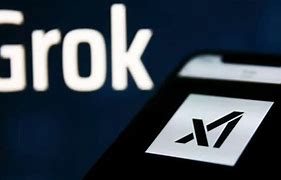In a groundbreaking move that is set to revolutionize the field of artificial intelligence, Elon Musk’s startup, XAI, has announced the release of its large language model, GROK, as open-source software. This decision marks a significant departure from the norm in the tech industry, where advanced AI models are often closely guarded. GROK, which boasts an impressive 314 billion parameters, is now available for anyone to access, modify, and distribute under the permissive Apache 2.0 license.
The release of GROK into the open-source community is expected to democratize AI research and development, enabling a broader range of scientists, developers, and hobbyists to experiment with and build upon this advanced technology. By making GROK freely available, XAI aims to foster innovation and collaboration within the AI field, potentially accelerating the pace of breakthroughs and applications.
GROK’s capabilities are vast, encompassing natural language processing, generation, and understanding at a scale previously unseen in open-source models. Its release is poised to have a profound impact on various sectors, including healthcare, finance, and education, by enabling more sophisticated and nuanced AI-driven solutions.
The Significance of Open-Sourcing GROK
The decision to open-source GROK is not just a milestone for XAI but also a significant moment for the AI community at large. Historically, the most advanced AI models have been developed and held by a few leading tech companies, limiting access to those with the resources to afford expensive licenses or proprietary technology. By contrast, GROK’s open-source nature ensures that it is accessible to a wide audience, leveling the playing field for developers and researchers worldwide.
This move also reflects a growing trend towards transparency and collaboration in AI research. By sharing GROK with the world, XAI is inviting scrutiny, feedback, and contributions from the global community. This open approach is expected to enhance the model’s reliability, ethical standards, and applicability to real-world problems, as diverse perspectives and expertise are brought to bear on its development.
Furthermore, the open-sourcing of GROK aligns with a broader push for ethical AI development. By making such a powerful tool freely available, XAI is promoting a model of AI development that prioritizes accessibility, inclusivity, and the public good over commercial interests.
Technical Aspects and Capabilities of GROK
GROK’s architecture is designed to handle a wide array of complex tasks, from understanding and generating human-like text to solving intricate computational problems. With 314 billion parameters, it represents one of the most sophisticated AI models ever made publicly available. Parameters in AI models are akin to the knowledge base that the model uses to make predictions and decisions, meaning GROK’s vast number of parameters allows it to process and generate information with unprecedented accuracy and subtlety.
Despite its complexity, GROK is designed to be user-friendly, ensuring that developers and researchers can easily implement and experiment with the model regardless of their level of expertise. This accessibility is crucial for encouraging widespread adoption and innovation within the AI community.
The open-source release includes not just the model itself but also documentation and tools to facilitate its use. This comprehensive package ensures that users can quickly get up to speed with GROK’s capabilities and start integrating it into their projects and research.
Impact on Industries and Future Applications
The implications of GROK’s release are far-reaching, with potential applications across a wide range of industries. In healthcare, for example, GROK could be used to develop more accurate diagnostic tools or to personalize treatment plans based on a patient’s unique medical history. In the financial sector, its advanced understanding of language and nuance could revolutionize customer service and fraud detection systems.
Education is another area where GROK’s impact could be transformative. By facilitating the development of more responsive and intelligent educational tools, GROK could offer personalized learning experiences at scale, potentially improving outcomes for students around the world.
Moreover, as developers and researchers begin to explore GROK’s capabilities, it’s likely that entirely new applications and use cases will emerge, some of which may be beyond our current imagination. The open-source nature of GROK not only makes these innovations possible but accelerates their development by allowing for collaborative, community-driven progress.
Conclusion and Future Prospects
The release of GROK as open-source software is a bold move by Elon Musk’s XAI, one that could significantly alter the landscape of AI development. By making this advanced technology freely available, XAI is not only promoting innovation and collaboration but also advocating for a more ethical and inclusive approach to AI development.
As the AI community begins to explore and expand upon GROK’s capabilities, we can expect to see a surge in AI-driven innovations across various sectors. The true potential of GROK is yet to be fully realized, and its impact will depend on how the global community leverages this powerful tool.
Ultimately, the open-sourcing of GROK represents a hopeful vision for the future of AI, one where advanced technologies are shared resources that benefit all of humanity. As we stand on the brink of this new era, the possibilities are as vast and exciting as the capabilities of GROK itself.
